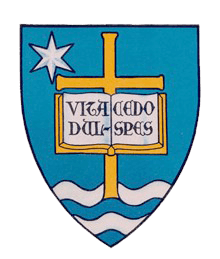Hesburgh Library
 The Hesburgh Library and the reflection pool | |
| Country | United States |
|---|---|
| Type | Academic library |
| Established | 1964 |
| Location | Notre Dame, IN |
| Coordinates | 41°42′09″N 86°14′04″W / 41.702598°N 86.234336°W |
| Branch of | Hesburgh Libraries |
| Branches | 9 |
| Collection | |
| Size | 3,000,000+ books, 3,000,000+ microform units, 34,000+ electronic titles, 28,850+ audiovisual items |
| Access and use | |
| Access requirements | Students, faculty, and staff |
| Circulation | 329,511 |
| Population served | 14,000 |
| Other information | |
| Budget | $27,000,000 |
| Director | Diane Walker, University Librarian |
| Website | |
| References: [1][2] | |
Theodore Hesburgh Library is the primary building of the library system of the University of Notre Dame. The building opened on September 18, 1963, as the Memorial Library. It was named after Father Theodore Hesburgh in 1987. The library has 3.39 million volumes, the 61st largest collection among all U.S. research universities.[3] During his service to the university, Father Hesburgh enjoyed an office on the 13th floor of the library, overlooking the Main Quad.
History
Early Libraries
The first circulating library at Notre Dame was created in 1873 by President Rev. Augustus Lemonnier, C.S.C. and it was hosted in the Main Building; its first librarian was Jimmie Edwards. In 1879 the Main Building was destroyed by fire, and 500 books were lost. After the rebuilding of the new Main Building, a new library was established with a budget of $500 and it comprised 16,000 volumes. In 1888, during the golden jubilee of Fr. Edward Sorin, a new library was opened on the third floor, and by 1900 it contained 52,000 books. In 1907, a professional librarian, Florence Espy, was hired to catalog the collection.
A new building (today Bond Hall) to host the library was built in 1917, and by 1920 it reached 103,00 volumes, that were classified using the Dewey Decimal Classification since 1929. in the following decades, thematic collections splintered off from the main bulk. A separate engineering library opened in 1933, followed by a biology library in 1938, the Medieval Institute in 1946, and in 1953 by the Nieuwland science library for chemistry, physics, and mathematics.[4]
Current library
President Hesburgh announced the construction of the new library in 1959, and ground was broken in 1961. The architect was The Ellerbe Company of St. Paul, Minnesota. Construction took three years, and in 1964 the new library, named Memorial Library, was formally opened. The finished structure was 210 feet tall on a site 315 feet square. The interior is fully 429,780 square feet, and has two large lower floors that serve as a base for an almost windowless tower of 13 stories capped by a smaller penthouse at the top. The interior of the floors is almost without walls, but supported by bare columns. This was done to create more free space to arrange stacks of books base on need. The windows were reduced to a minimum in order to avoid uneven light from the outside. The lower floors feature a more extensive use of glass along with brick and tweed granite. It reached its millionth volume in 1972.[5] In 1987 the name was changed to Hesburgh Library, in honor of retiring president Father Theodore Hesburgh.
In 2015 it underwent the beginning of major renovations that will recreate the interiors with a more modern design.
Word of Life/Touchdown Jesus mural
The side of the library facing the stadium is covered a 134 feet high and 68 feet wide mural called "The Word of Life", and commonly known as "Touchdown Jesus".[6]
History
When the library opened, the mural had not been yet installed. A work large enough to cover the entire side of the library facing the football stadium was commissioned to American artist Millard Sheets. Fr. Theodore Hesburgh suggested that the theme should be saints and scholars through the ages. The work that Miller created cost $200,000 and was donated by Mr. and Mrs. Howard V. Phalin of Winnetka, Illinois. Installation took place in the spring of 1964, and the dedication ceremony was held on May the 7th, 1964. The mural is made up of 324 panels. 81 different stones, in 171 finishes, from 16 countries, were employed in its creation. This included 46 granites and syenites, 10 gabros and labradorites, 4 metamorphic gneisses, 12 serpentines, 4 crystalline marbles, and 5 limestones.[7]
Analysis
Sheets created a procession of figures representing Christian saints, thinkers, teachers, and writers, a topic that connected to the idea of the library itself. Figures were selected from different centuries and places to give the idea of the historical continuity of the Church. At the top of the procession, the central figure is the resurrected Jesus Christ, conceived as the great teacher and master, and the fountain of the knowledge contained in the library. The work was entitled "Word of Life".[8]
Nickname
The image of Jesus is visible from the stadium and has his arms raised in the same fashion as a referee signifying a touchdown. From this similarity came the nickname "Touchdown Jesus".[9] The stadium expansion had the side effect of partially obscuring the view of Touchdown Jesus from the field.
References
- ↑ http://library.nd.edu/about/library_statistics.pdf
- ↑ https://library.nd.edu/about/hesburgh-libraries.shtml
- ↑ The future of Hesburgh Library
- ↑ https://library.nd.edu/about/history/timeline.shtml
- ↑ https://library.nd.edu/about/history/
- ↑ http://articles.chicagotribune.com/2004-09-26/travel/0409250216_1_edward-sorin-campus-golden-dome/2
- ↑ https://library.nd.edu/about/history/mosaic.shtml
- ↑ 134 feet high and 68 feet wide
- ↑ Why Irish eyes are smiling
External links
Sources
- Stevenson, Marsha. "Style and Symbol: Library Buildings at Notre Dame." WHAT IS WRITTEN REMAINS: HISTORICAL ESSAYS ON THE LIBRARIES OF NOTRE DAME. Ed. Maureen Gleason and Katharina J. Blackstead. Notre Dame: University of Notre Dame Press, 1994.
- Winkler, Erhard M. "'Word of Life;' Stone Mural Dominates Notre Dame Library." STONE MAGAZINE. October 1967.
Coordinates: 41°42′09″N 86°14′03″W / 41.70250°N 86.23417°W
